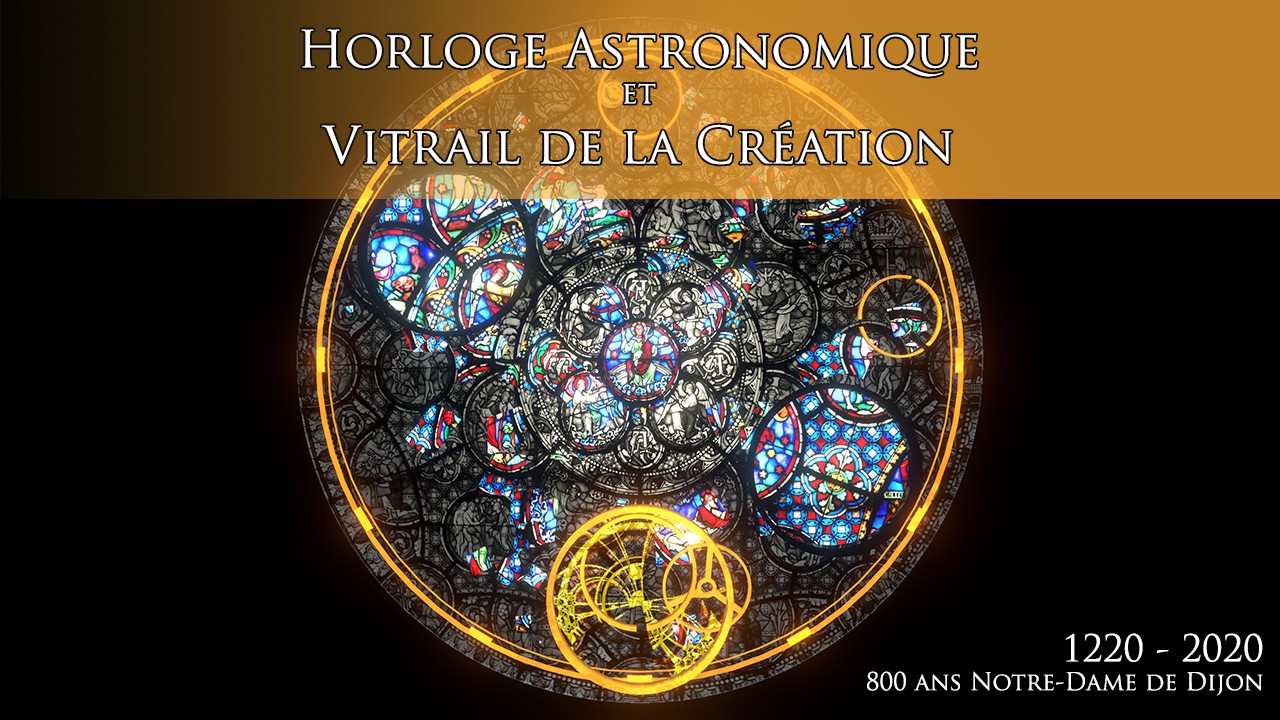
How to use an Astrolabe ?
Using an astrolabe is not complicated. Here is a simple explanation :
The astrolabe (“star-taker” in Greek) is an astronomical instrument invented in Antiquity (2nd century BC). It was used until the 18th century, then abandoned in favor of the sextant used in navigation. The astrolabe makes it possible to represent a sky chart, by stereographic projection of the celestial vault on a plane.
Main uses
-Measure angles, by sighting
-Measure the height of the stars (stars, sun)
-Read the time (day and night)
-Determine the ephemeris (times of rising and setting of stars)
Assembly
An astrolabe is made up of pieces centered on the pole star (projection of the axis of rotation of the Earth, and therefore around which all the stars seem to revolve).
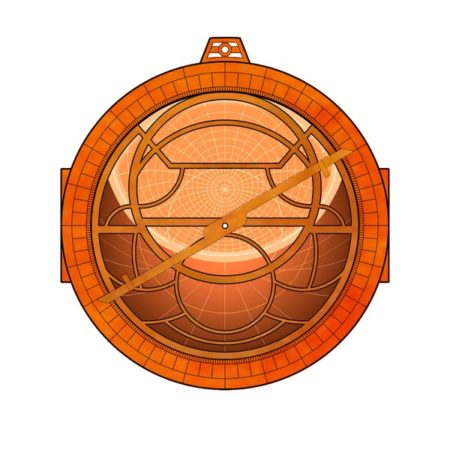
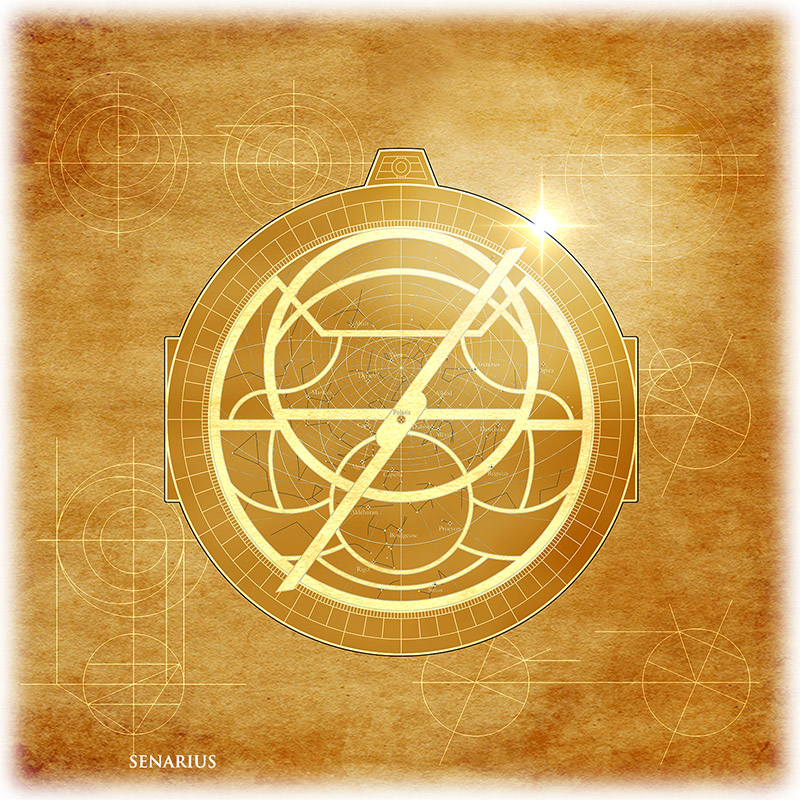
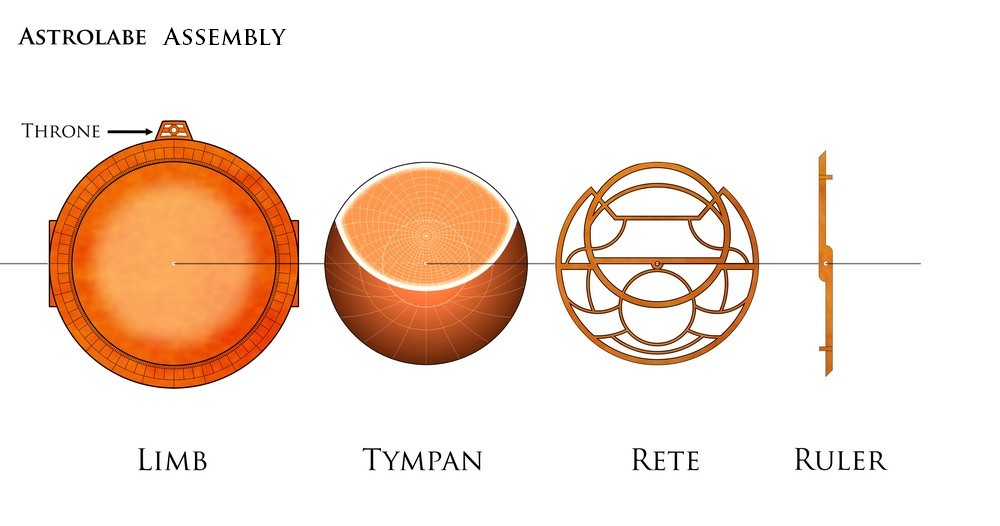
Tympan
The tympan represents the projection of the local sphere. It therefore shows the cardinal points, the horizon, and the visible part of the sky with the zenith of the place. It therefore depends on the latitude. At the equator, the pole star is on the horizon. While at the north pole, the pole star coincides with the zenith. For each latitude, you need a different tympan.
The tympan is a fixed part of the astrolabe.
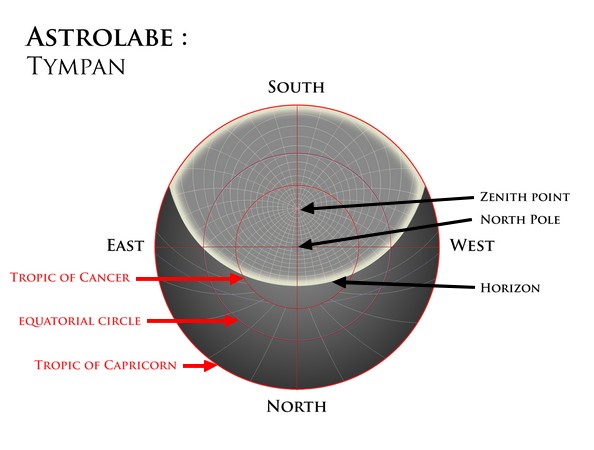
Rete
Real artwork and master piece, the rete represents the projection of the celestial sphere. It shows a sky chart with the positions of the main stars. It also presents the ecliptic: the different positions of the sun on the celestial vault, varying over the year. The ecliptic is graduated in a calendar to determine dates, with remarkable dates (solstices and equinoxes).
The rete is a moving part of the astrolabe.
WARNING: the sky chart shown by an astrolabe is inverted. This inversion is due to the stereographic projection.
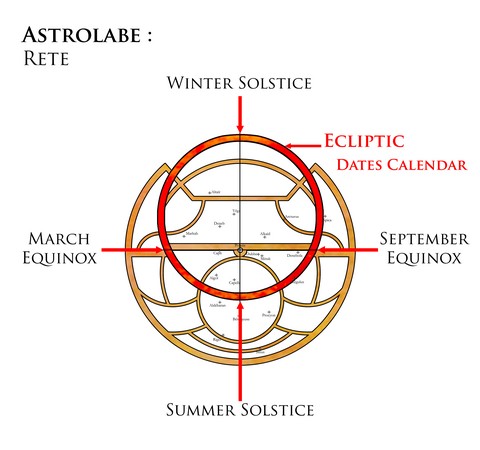
To know the time with the astrolabe
1-Aim: take the height of a star (eg Deneb), angle to the horizon.
2-Turn the rete to match the position of the star with the height engraved on the tympan.
Remember : This operation shows the map of the sky and the stars visible at the time of measurement.
3-Locate the position of the sun on the ecliptic corresponding to the date of the measurement.
– Point the rule on the position of the sun, and thus read the time on the graduated limb of the astrolabe.
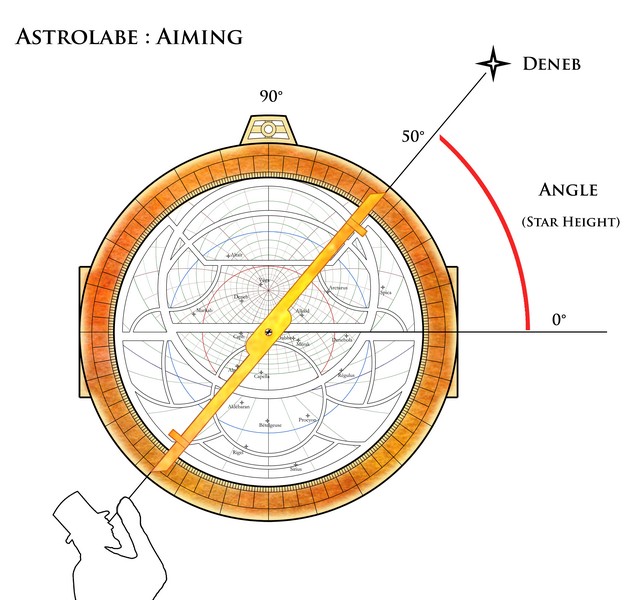
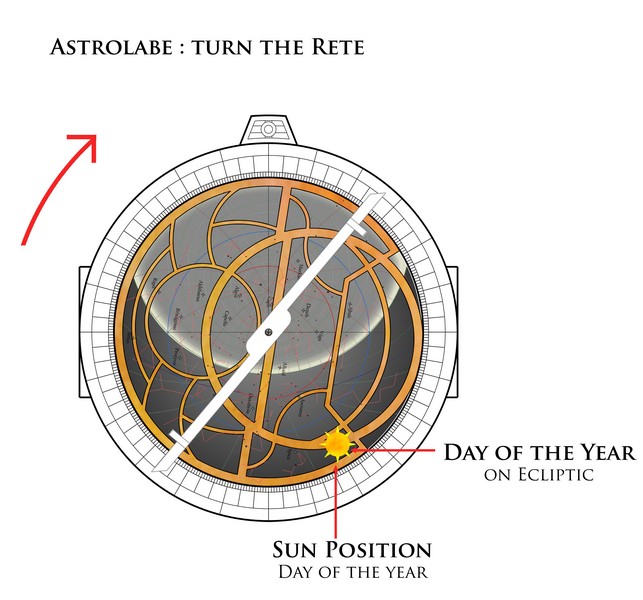
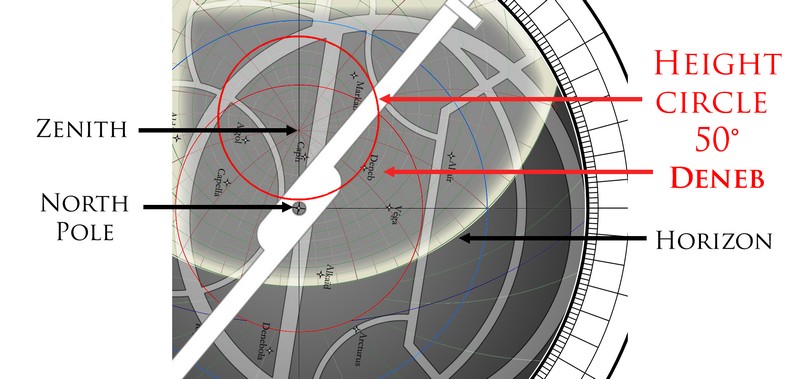
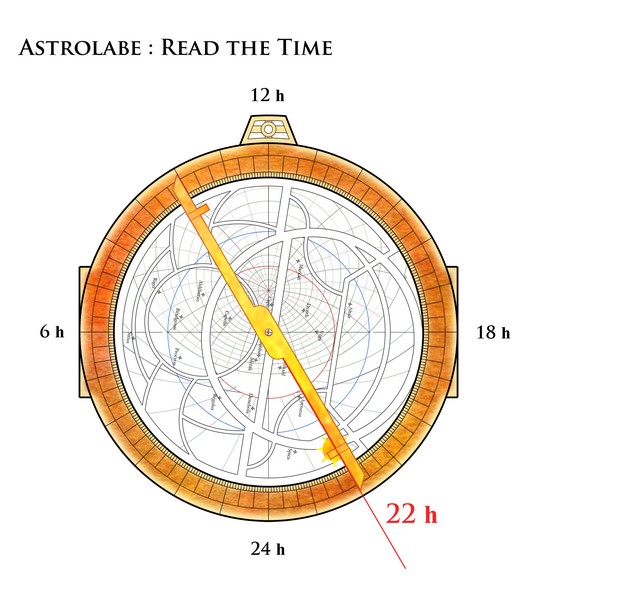
Determining the ephemeris: example, knowing the time of sunrise
-Locate the position of the sun on the ecliptic corresponding to the desired date of the day.
-Rotate the rete to match the position of the sun with the eastern horizon of the tympan.
– Point the rule on the position of the sun, and thus read the time on the graduated limb of the astrolabe.
Artist’s views : Senarius Astrolabes
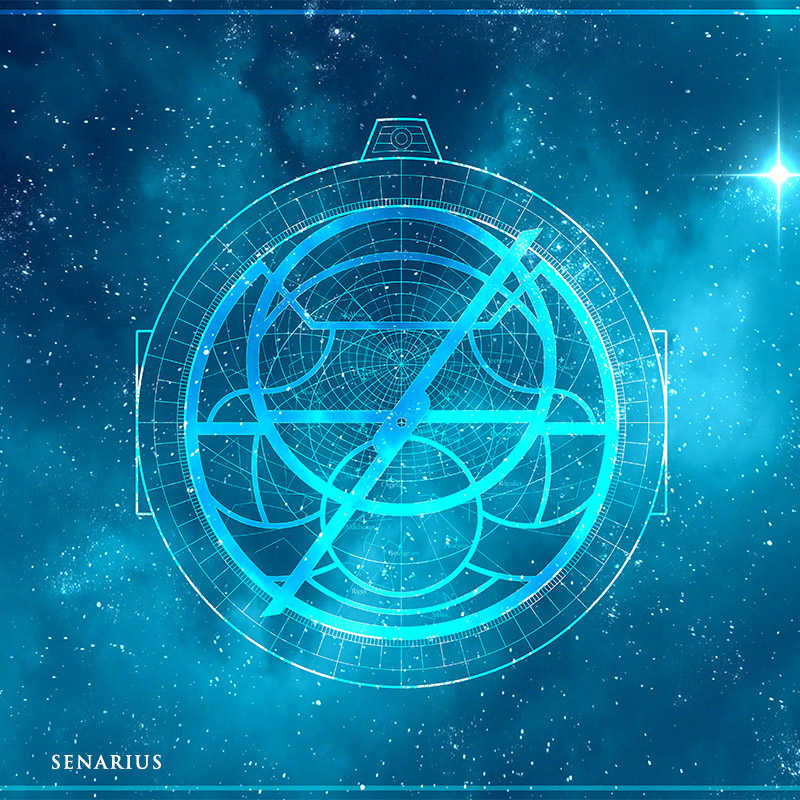
Astrolabe – The star-taker
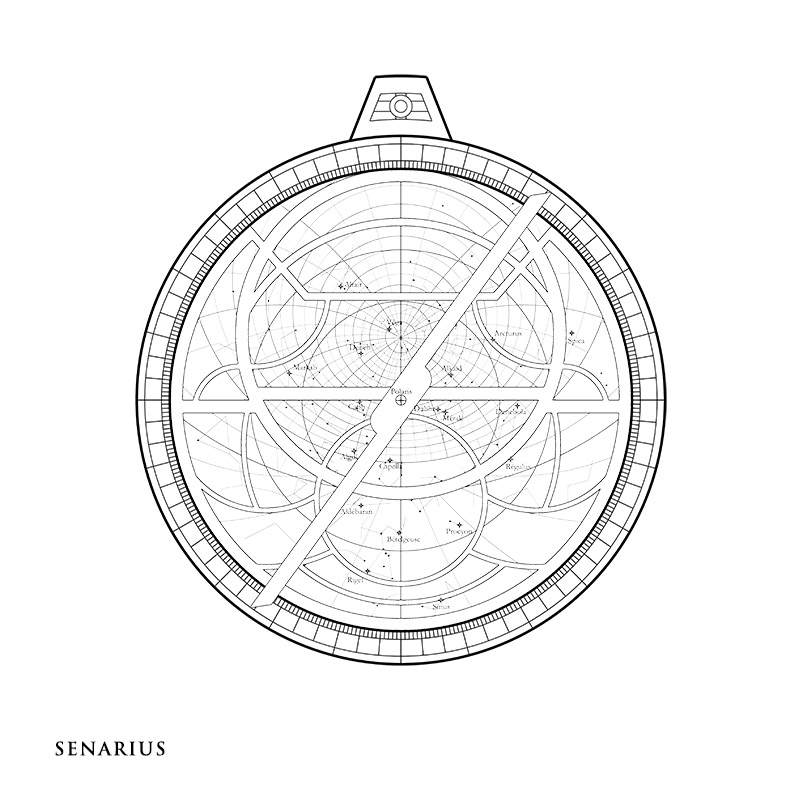
Astrolabe – Sky chart

Astrolabe – Technical drawing
Sources
-Logiciel Shadows https://www.shadowspro.com/fr/astrolabe-planispherique.html
-Associations http://www.meridienne.org/index.php?page=astrolabe.presentation
http://www.astrolabium.be/mesurercieletterre/Astrolabe
-Wikipédia https://fr.wikipedia.org/wiki/Astrolabe_planisph%C3%A9rique

